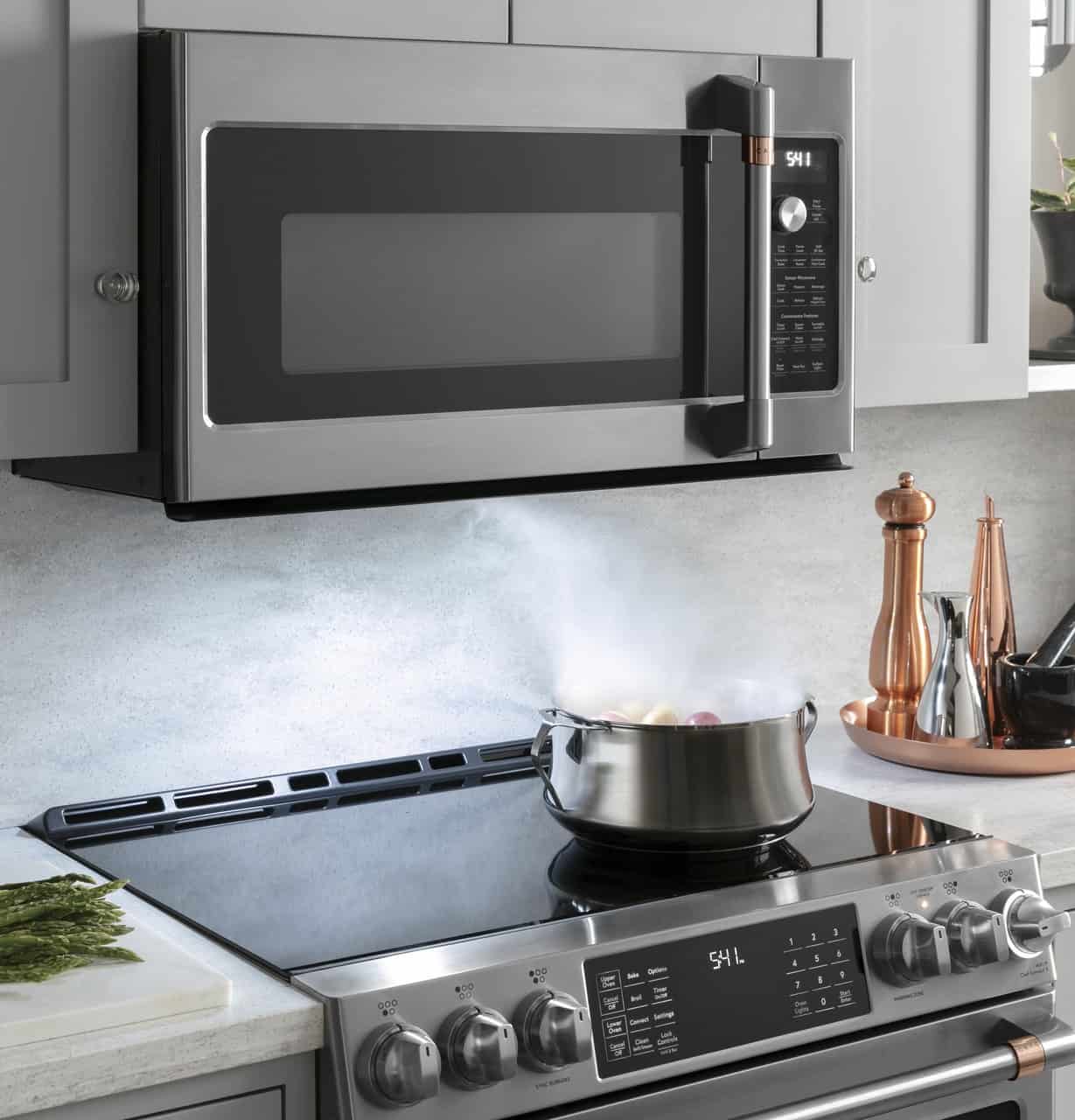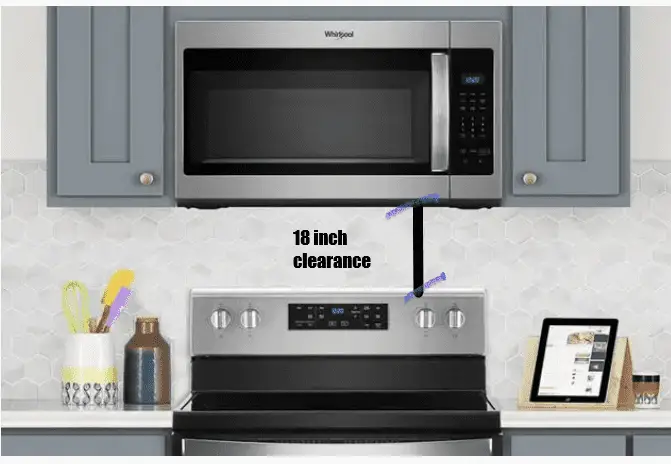Microwaves are a great addition to any kitchen but must be appropriately positioned. They work by using electromagnetic waves to heat food. The waves travel through the air and bounce off the inside walls of the microwave, heating the food.
The microwaves are most robust at the center of the oven and decrease in strength as they move toward the edges. If you place your microwave too low above your stovetop, the microwaves won’t penetrate deep enough into your food and will cook it unevenly.

If you place your microwave too high above your stovetop, it will have trouble heating up quickly because it’s too far away from the surface where heat is produced—the stovetop itself.
The distance between the microwave and the range top varies depending on the type of microwave you intend to use. Because over-the-range microwaves are designed to withstand higher temperatures, they require far less space between the stove and the microwave than countertop microwaves.
How high should a microwave be above the stove?
The microwave should be 18 inches above the stove (cooktop). According to the National Kitchen and Bath Association, if the average height of the cooktop (stovetop) is 36 inches and the microwave is at least 54 inches above the floor, there will be around 18 inches of clearance between the microwave and the stove (cooktop).

Mounting Over-the-Range
Built-in ventilation systems filter and vent exhaust from the cooktop in over-the-range microwaves. These types allow venting outside the house through a duct or directly into the kitchen. The required clearance between these devices and the stove varies depending on who you ask.
Most local building regulations require a 30-inch distance between the top of a range and any flammable surface. Still, the International Residential Code requires that over-the-range microwaves, intended to withstand less clearance, be installed according to the manufacturer’s recommendations.
Some manufacturers permit smaller clearances. General Electric microwaves, for example, must be positioned at least 66 inches from the floor and the top of the microwave, resulting in a clearance of between 13 and 16 inches between the microwave and the cooktop. Due to tight clearances, large pots may be challenging to use on the stove.
Limits on Range Output
Manufacturers also establish restrictions on the output capacity of cooktops designed to work with over-the-range microwaves. For example, GE specifies that their over-the-range microwave versions should not be installed over any range whose burners produce more than 60,000 British thermal units combined, far more than a standard residential range’s 7,000 BTUs. So, unless you have a lot of powerful burners, this is generally not a limit you need to be concerned about.
Landing Zones for Microwaves
The National Kitchen and Bath Association recommends a clean landing space near a microwave to set down food retrieved from the microwave quickly. The landing area should be at least 15 inches wide and above, below, or adjacent to the microwave’s handle side. Keeping a clear counter space next to the cooktop is critical because there is no room for a landing area beneath an over-the-range microwave.
Conclusion
When you’re cooking, you must ensure your microwave is suitable. You don’t want to bend over whenever you want to eat some food, and you don’t want to reach up too high and risk burning yourself on the stovetop or the microwave itself.
It’s important to remember that microwaves heat food by creating an electromagnetic field. If you want to heat something evenly, it must be spread out in a single layer so that the entire item is exposed to the microwaves simultaneously. If you have a tall pan of food, like a pot roast or a casserole dish full of lasagna, you must put it on a plate and then place it inside the microwave. All your food will be in one flat layer and can be cooked evenly.
When heating things in the microwave, don’t let them sit there too long—it can make them cold! It’s best to check on your food every minute or two after putting it in for an initial heating period (around 5 minutes) and then every few minutes after that until it’s ready to eat/cook/whatever else you’re doing with it.




